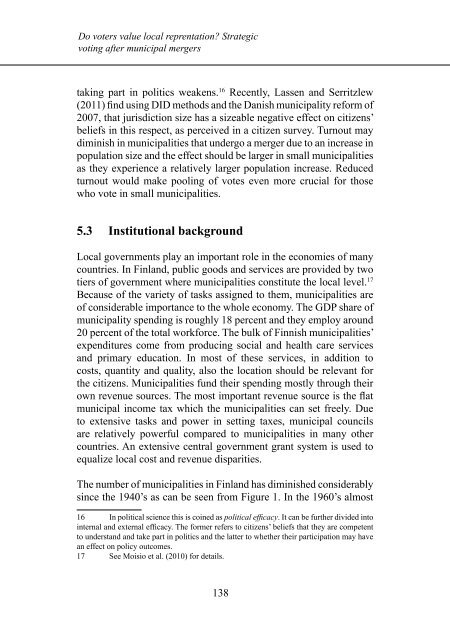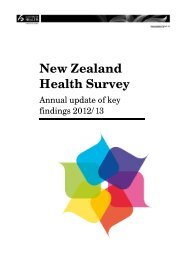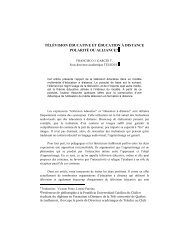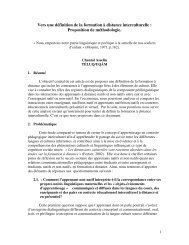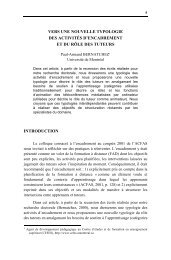61 Rethinking local government: Essays on municipal reform - VATT
61 Rethinking local government: Essays on municipal reform - VATT
61 Rethinking local government: Essays on municipal reform - VATT
Create successful ePaper yourself
Turn your PDF publications into a flip-book with our unique Google optimized e-Paper software.
Do voters value <str<strong>on</strong>g>local</str<strong>on</strong>g> reprentati<strong>on</strong>? Strategicvoting after <strong>municipal</strong> mergerstaking part in politics weakens. 16 Recently, Lassen and Serritzlew(2011) find using DID methods and the Danish <strong>municipal</strong>ity <strong>reform</strong> of2007, that jurisdicti<strong>on</strong> size has a sizeable negative effect <strong>on</strong> citizens’beliefs in this respect, as perceived in a citizen survey. Turnout maydiminish in <strong>municipal</strong>ities that undergo a merger due to an increase inpopulati<strong>on</strong> size and the effect should be larger in small <strong>municipal</strong>itiesas they experience a relatively larger populati<strong>on</strong> increase. Reducedturnout would make pooling of votes even more crucial for thosewho vote in small <strong>municipal</strong>ities.5.3 Instituti<strong>on</strong>al backgroundLocal <str<strong>on</strong>g>government</str<strong>on</strong>g>s play an important role in the ec<strong>on</strong>omies of manycountries. In Finland, public goods and services are provided by twotiers of <str<strong>on</strong>g>government</str<strong>on</strong>g> where <strong>municipal</strong>ities c<strong>on</strong>stitute the <str<strong>on</strong>g>local</str<strong>on</strong>g> level. 17Because of the variety of tasks assigned to them, <strong>municipal</strong>ities areof c<strong>on</strong>siderable importance to the whole ec<strong>on</strong>omy. The GDP share of<strong>municipal</strong>ity spending is roughly 18 percent and they employ around20 percent of the total workforce. The bulk of Finnish <strong>municipal</strong>ities’expenditures come from producing social and health care servicesand primary educati<strong>on</strong>. In most of these services, in additi<strong>on</strong> tocosts, quantity and quality, also the locati<strong>on</strong> should be relevant forthe citizens. Municipalities fund their spending mostly through theirown revenue sources. The most important revenue source is the flat<strong>municipal</strong> income tax which the <strong>municipal</strong>ities can set freely. Dueto extensive tasks and power in setting taxes, <strong>municipal</strong> councilsare relatively powerful compared to <strong>municipal</strong>ities in many othercountries. An extensive central <str<strong>on</strong>g>government</str<strong>on</strong>g> grant system is used toequalize <str<strong>on</strong>g>local</str<strong>on</strong>g> cost and revenue disparities.The number of <strong>municipal</strong>ities in Finland has diminished c<strong>on</strong>siderablysince the 1940’s as can be seen from Figure 1. In the 1960’s almost16 In political science this is coined as political efficacy. It can be further divided intointernal and external efficacy. The former refers to citizens’ beliefs that they are competentto understand and take part in politics and the latter to whether their participati<strong>on</strong> may havean effect <strong>on</strong> policy outcomes.17 See Moisio et al. (2010) for details.138


